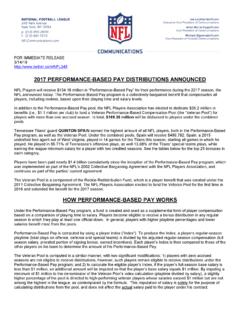Transcription of Dangerous Neighbors: Pipelines, Compressor Stations, and ...
1 1 Dangerous Neighbors: Pipelines, Compressor Stations, and Environmental Injustice Introduction: As natural gas continues to be touted as the transition fuel of choice, the industry s extraction and rush to build infrastructure and its consequences have been coming under increased scrutiny. Natural gas pipelines and Compressor stations are associated with specific risks and health problems, which frequently bring the most harm to low income communities and communities of color, often given little or no choice about hosting gas infrastructure in their communities. Natural Gas infrastructure What is it really delivering? In an article entitled The Networked Infrastructure of Fossil Capitalism: Implications of the new pipeline Debates for Environmental Justice in Canada 1, Dayna Scott describes fossil fuel pipelines and Compressor stations as infrastructure that delivers environmental injustice by changing the physical properties and configurations of communities, and taking away community choice for the type of energy in which they want to invest.
2 This is a useful framework to consider how pipelines are planned, sited, and permitted here in the US and, in particular, the proposed Atlantic Coast pipeline , planned to run through 8 counties in eastern North Carolina. If allowed to proceed, the Atlantic Coast pipeline will deliver adverse health impacts, limited choice on future energy investment, and heightened risk of accidents, and disproportionately to low income and people of color communities. Health Effects of Gas Pipelines and Compressor Stations As the body of research about the health effects of living near fossil fuel infrastructure has grown, so has the concern of public health professionals. In September, 2015, over eighty health professionals sent an open letter to the Federal Energy Regulatory Commission (FERC) calling on the Commission to discontinue any granting of permits that expand the fossil fuel infrastructure2: 2 We, the undersigned health professionals, strongly urge the Federal Energy Regulatory Commission (FERC) to immediately stop issuing permits for any new fossil fuel infrastructure.
3 Based on scientific evidence of the health and public safety risks associated with fossil fuel infrastructure such as oil and gas drilling, refineries, pipelines and Compressor stations and of their contribution to the further escalation of climate change and its associated risks to public health and safety, there must be a moratorium on new permits and a hold on construction for projects that have not been completed until a plan is made to move completely to energy sources that do not cause harm. Pipelines and Compressor stations bring with them a host of health risks and dangers. Communities of color and low income have long been targeted for disruptive infrastructure projects and polluting facilities - including pipelines and Compressor stations - that cause health problems for the surrounding The specific volatile organic compounds (VOCs) that are emitted by Compressor stations have been associated with several serious health problems, including cancers, respiratory and cardiovascular illness, and birth defects4.
4 The health complaints of residents near these facilities have been consistent. The difficulty in directly correlating health complaints with exposure to emissions may be partly due to the failure to collect information about intermittent peak exposures. Toxic air emissions are often reported as averages over a year, which fails to account for shorter, more intense incidents of exposure that can cause more damage than a consistent, lower average exposure. The annual averaging of emissions also fails to account for how cumulative periods of exposure can cause cumulative damage, nor do current measurement practices account for varying health impacts based on proximity to a source of emissions. Emissions are often averaged over a several-mile radius, yet residents close to processing stations will necessarily experience higher exposures. One peer-reviewed study specific to PA Compressor stations found that distance to industrial sites correlated with the prevalence of health symptoms.
5 For example, when a gas well, Compressor station , and/or impoundment pit were 1500-4000 feet away, 27 percent of participants reported throat irritation; this increased to 63 percent at 501-1500 feet and to 74 percent at less than 500 feet. At the farther distance, 37 percent reported sinus problems; this increased to 53 percent at the middle distance and 70 percent at the shortest distance. Severe headaches were reported by 30 percent of respondents at the farther distance, but by about 60 percent at the middle and short distances. 5 Residents living near natural gas Compressor stations also report symptoms consistent with inhalation of harmful emissions. The specific chemicals emitted by Compressor stations vary from site to site. In Dish, TX, some chemicals identified as exceeding Texas s ambient air standards, measured at a variety of locations near and on residential properties6 include: benzene, dimethyl disulfide, methyl ethyl disulphide, ethyl-methylethyl disulfide, trimethyl benzene, diethyl benzene, methyl-methylethyl benzene, tetramethyl benzene, naphthalene 1,2,4-trimethyl benzene, m-&p- xylenes, carbonyl sulfide, carbon disulfide, methyl pyridine, dimethyl pyridine.
6 Anecdotally, we know that people living near Compressor stations report episodic strong odors as well as visible plumes during venting or blowdowns. Residents often report symptoms that they associate with odors such as burning eyes and throat, skin irritation, and headaches. 7 These reported symptoms - related to the respiratory, nervous and cardiovascular systems are consistent among residents across a range of geographic locations impacted by gas development. 3 Left: Susan Wallace-Babb lives close to a natural gas well and two fuel storage tanks in Parachute, CO. After getting violently ill following exposure to fumes, she now wears a gas mask almost every time she goes outside (Erin Trieb for ProPublica ). Right Rash suffered by Lisa Parr after a multitude of fracking wells cropped up near her family s home. Other symptoms her family suffered included nausea, high blood pressure, nosebleeds, and eyesight problems.
7 They were awarded $3 million in a lawsuit against Aruba Petroleum, Inc. (Photo courtesy of Parr family ) The type of exposure also depends on the type of incident: fugitive emissions, blowdowns, or accidents. Fugitive emissions are uncontrolled or under-controlled releases. They occur from equipment leaks from pipes, valves, connectors, tank hatches, etc. that are part of wellheads, separators, or pneumatic liquid level controllers, and Compressor The largest emissions from Compressor stations come from blowdowns, which can be scheduled (to relieve pressure or seal off a section of the infrastructure to perform repairs) or accidental. In a blowdown, a gas plume bursts from the equipment to a height of 30-60 meters. The most forceful rush occurs at the beginning (see above on intermittent, large exposures) and then slows down over the course of a few hours. Blowdowns are periods of increased exposure for surrounding residents, and cause high levels of noise that can last for hours, sometimes waking neighbors in the middle of the night and preventing sleep.
8 There is also a risk of accidents. The pipeline and Hazardous Materials Safety Administration (PHMSA, in the Department of Transportation) collects data on all reported incidents for gas pipelines including gathering, transmission, and distribution. From 1996 to 2015, there were 11,192 incidents costing $6,678,631,880. These incidents killed 371 people and injured another 1,378. In just the first six weeks of 2016, there were 53 incidents costing $10,118, Perhaps the worst natural gas incident on soil in recent times was in San Bruno, CA in 2010, when a faulty seam in a pipe owned by PG&E led to a tremendous explosion. The blast flattened or damaged dozens of homes and killed 8 people. To make matters worse, the section of pipe that led to the explosion was incorrectly listed as seamless, meaning it was not part of the safety inspections for sections with seams. PG&E faces numerous criminal charges for this 4 A 2010 explosion in San Bruno, CA pipeline flattened a neighborhood and killed 8 people ( ).
9 This explosion occurred after increased pressure in the line weakened some poorly welded seams. Compressor stations also present a possible source of radioactive exposures. The gas in the pipelines lines typically carries some radon, and as the radon decays, it leaves polonium and lead to build up inside the pipes (polonium and lead radioisotopes have more extended half-lives 138 days and years, respectively - than radon, days.).11 When these radioactive by-products are present, workers and nearby residents could be exposed during blowdowns. Gas customers at the end of pipelines may also be Workers could receive radiation exposure when handling contaminated pipes during routine cleaning or maintenance. We know that methane leaks from natural gas infrastructure and accidents have a strong effect on climate There is evidence that, in the recent rush to build so many new pipelines to support the expansion of fracking and investment in natural gas, the pipelines are being built with fewer quality controls.
10 In fact, new transmission lines are failing at the same rate as those constructed in the 1940s (or worse)! Says Carl Weimer, of the pipeline Safety Trust, "The new pipelines are failing even worse than the oldest 5 Coastal Processing Facilities Coastal processing facilities are used to transform natural gas from gaseous form into liquefied natural gas (LNG) to condense it for overseas shipping. European and Asian markets have, in the recent past, been willing pay high enough prices for natural gas to make it cost-effective to ship long distances, and the industry has been seeking permits for export processing facilities for years . The super-cooling process that turns natural gas into LNG consumes massive amounts of energy ---and the LNG lifecycle emits at least as many toxic pollutants as It is the communities surrounding the facilities that take the brunt of that processing pollution before this purportedly cleaner fuel is shipped overseas.





